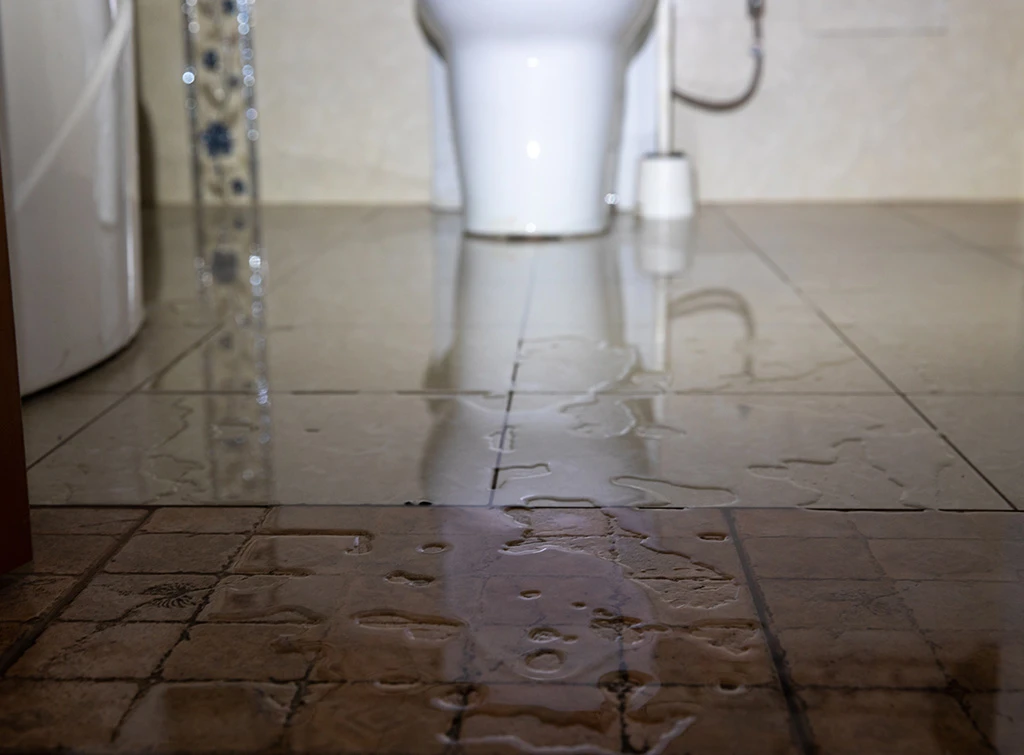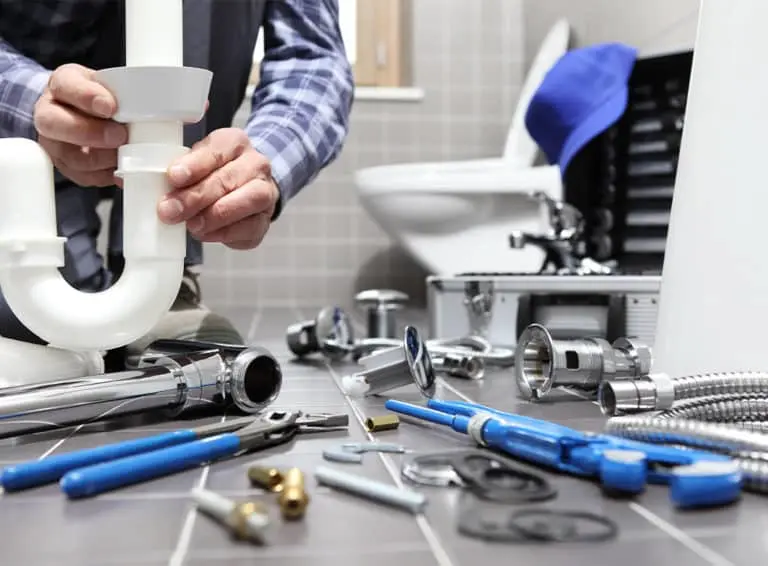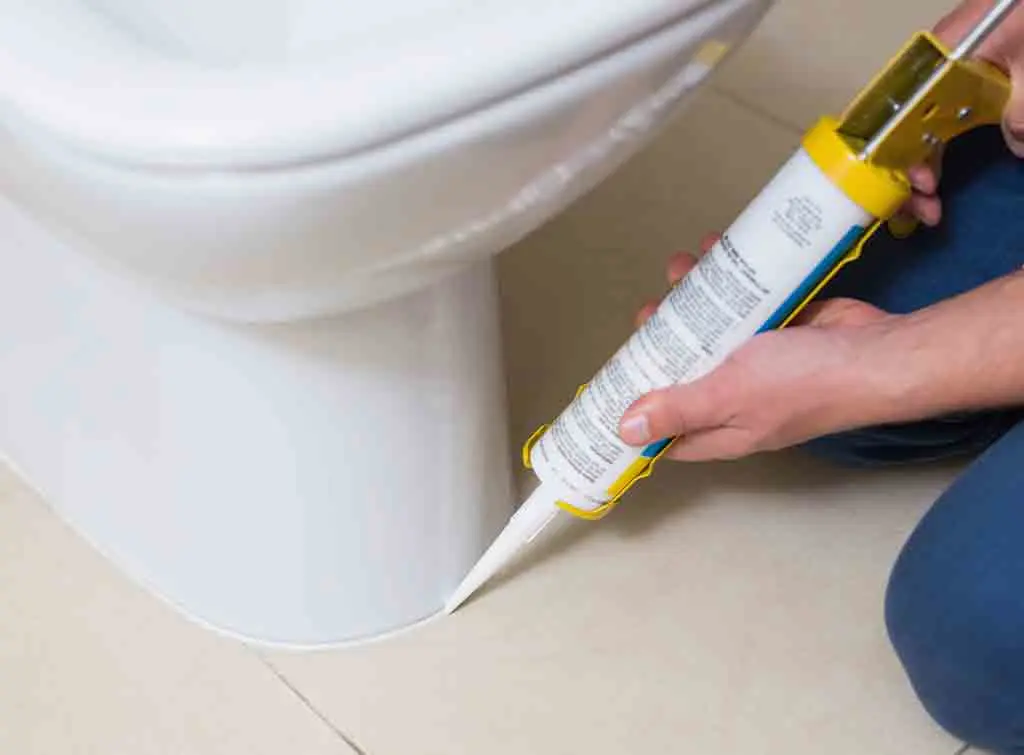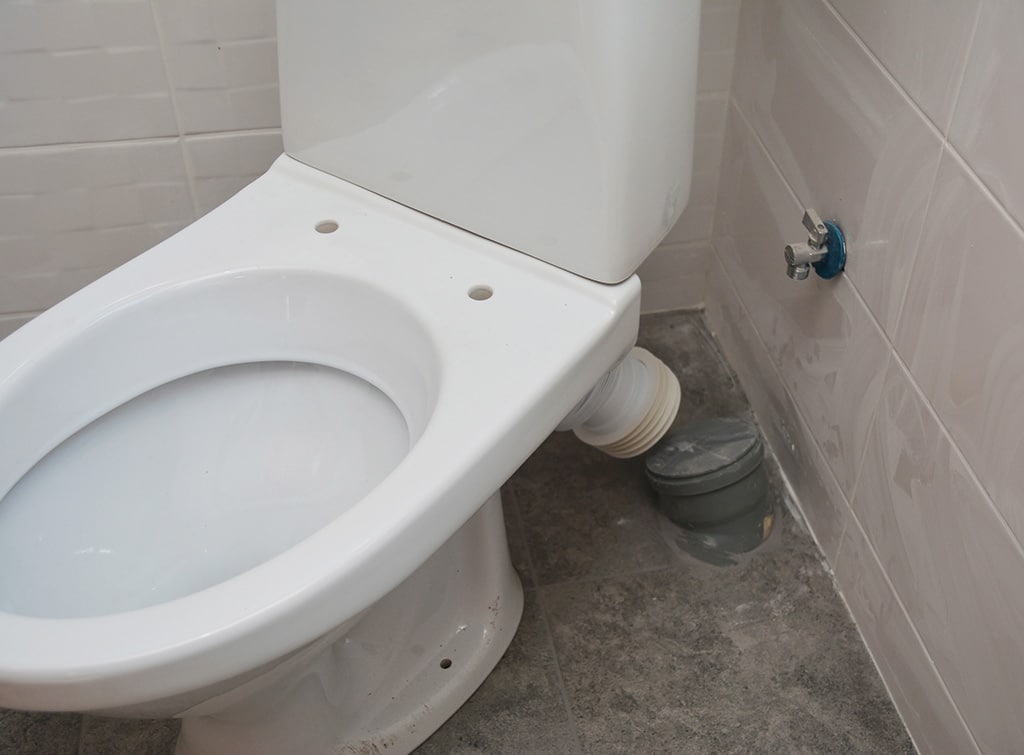Blog>Expert Advice>How to deal with a leak from a toilet waste pipe
Last updated: 15 August 2024
How to deal with a leak from a toilet waste pipe
If you’ve noticed a leak from your toilet waste pipe, you’ll want to get it fixed as soon as you can. To help you get it sorted, we’ve put together our top tips and advice on how to deal with a leaky toilet waste pipe.

It’s important to act fast when dealing with leaks, especially if it’s a leak from your toilet waste pipe.
In this guide, we’ll talk you through the main causes of a toilet leaking at the waste pipe and how to fix the problem.
Main causes of a leak from a toilet waste pipe
A leaking soil pipe in your toilet is usually caused by wear and tear, damage, or incorrect installation.
To help you understand and fix the problem, here are some of the most common causes of a toilet leaking at the waste pipe:
Worn-out seals or washers – It’s normal that, over time, the rubber seals or washers that connect your toilet to the waste pipe can wear or crack causing a leak
The waste pipe is not aligned properly – Poor installation or movement over time can leave your pipe and toilet misaligned, creating gaps that then allow water to escape
Pressure build-up – If your waste pipe gets blocked, it can cause pressure to build up, which can force water out through weak points or seals in the pipe
Damaged pipes – The waste pipe may have been cracked by physical impact, or old pipework might have weakened over time, leading to a leak from the toilet waste pipe
Loose connections – Sometimes, the connections between sections of the waste pipe become loose, creating gaps where water can leak out of
Rusted metal pipes – If you have a metal waste pipe, it may have corroded and developed cracks or holes
Poor quality materials – Low-quality fittings can often suffer from premature cracking and deterioration, which can cause a leak from the toilet waste pipe
You can quickly address the issue and stop the leak by identifying the exact cause of your leaky toilet waste pipe. Or, even better, contact a local plumber to take a look.
Need help with your toilet waste pipe repair?
Enter your postcode to see plumbers in your area.
See the tradespeople we've checked and recommend for your job
How to fix a leaking toilet waste pipe
If you’re a confident DIY enthusiast, you may be looking to repair your waste pipe yourself. For best results, we would always recommend hiring a professional, but here are the steps a plumber will likely follow:
1. Identify the cause of the leak
You’ll first need to find exactly where the leak is and what’s causing it. If it’s a minor leak, you might be able to fix it by tightening or sealing the pipe.
If it’s a major leak, you’ll likely need to replace a section of the pipe—or the whole pipe.
2. Turn off your water supply
Before working on your toilet’s leaking soil pipe, locate the shut-off valve and stop the water flow to your toilet.
The shut-off valve is usually located near the base of the toilet.
Once you’ve turned off the water, drain the toilet by flushing the toilet to empty the cistern and toilet bowl.
3. Access the waste pipe
To get proper access to the leaky toilet waste pipe, you may need to remove the toilet.
If so, you’ll need to unscrew it from the floor and carefully lift it off the waste pipe. Then make sure the area around the pipe is clear and accessible.

4. Repair your leaking toilet waste pipe
Some of the actions you might need to take include:
Tightening joints with a pipe wrench or adjustable spanner
Replacing any damaged seals or washers
Sealing the joints of your waste pipe with plumber's putty or silicone
Replacing damaged sections of waste pipe by cutting out any damaged sections using a pipe cutter or hacksaw
5. Put your toilet back
Once you’ve done the necessary repairs, replace your toilet (if you removed it) and reattach it to the floor.
Turn the water supply back on by opening the shut-off valve and allow your toilet’s cistern to fill.
If you did remove your toilet to repair the leaky soil pipe, apply silicone sealant around the base to prevent water from leaking onto the floor.
6. Test your toilet
With your toilet back in position with access to water flow, it’s time to test if the leak has been fixed.
Flush the toilet several times and check for any signs of a leak. Hopefully, everything should now be working without a leak in sight.
Leaking toilet - Find the cause, limit further damage and get it fixed
Whether your toilet is leaking at the base or toilet water is leaking into the bowl, if you don't get the problem fixed asap, it can cause significant damage to your home. Keep reading for our expert advice on who to call and what steps to take while you're waiting for a plumber.
Toilet still leaking at the waste pipe?
If you still have a leak from the toilet waste pipe after trying to fix it, it’s time to get professional help.
And, luckily, you’re in the perfect place to find plumbers near you.
Find toilet waste pipe repair services near you
Only trades who pass our checks and meet our high standards are on Checkatrade.
Enter your postcode to see plumbers in your area.
See the tradespeople we've checked and recommend for your job
FAQs
Why is the toilet waste pipe leaking when I flush?
There are several reasons why your toilet waste pipe might be leaking when you flush. Some of the common causes are:
Worn-out seals or washers
Misaligned pipework
Pressure build-up
Damaged pipes
Loose connections
Rusted metal pipes
Poor quality materials
To help you identify the problem and repair your leaking toilet waste pipe, speak to experienced local plumbers in your area.
Why is my toilet waste pipe leaking outside?
As with a leak indoors, there are various reasons why your toilet waste pipe leaks outside.
The leak could be caused by a cracked pipe, a blockage, loose connections or worn-out seals.
We recommend hiring an experienced plumber as soon as possible to inspect and repair the toilet waste pipe.
Why is my toilet leaking from the waste connection?
A worn out seal is one of the most common causes of a toilet leaking from the waste connection.
If that’s the case, you’ll need to replace the damaged seal with a new one to fix the leak.
Why is my toilet pan connector leaking?
Here’s why your toilet pan connector is leaking, and what to do.
How do you seal a leaking toilet waste pipe?
If you’re confident attempting to repair your toilet waste pipe sealant, here’s a quick overview of the steps to take:
Identify the source of the leak
Turn off the water supply
Dry out the area around the leak
Tighten any loose connections
Apply plumber’s tape around any threaded connections
Apply pipe sealant of epoxy putty to small cracks or pinhole leaks
For larger leaks, install a pipe repair clamp or replace damaged sections of the waste pipe
After making repairs, test your toilet to ensure the leak has been fixed
If you need help with your toilet waste pipe sealant repair, speak to experienced plumbers in your area.

Is a leaking waste pipe an emergency?
Generally, a leaking waste pipe would be considered a high-priority issue that you need to fix.
Any leaking pipes can quickly cause damage. And with a waste pipe, you’re dealing with a potential health risk caused by soiled water.
If you have a leaking waste pipe, contact a qualified local plumber as soon as possible.
Should a toilet waste pipe be sealed?
Yes, absolutely. Sealing the connections of a waste pipe is a vital part of installing a toilet.
You need to create a watertight seal so that the toilet works properly and prevents sewage leaks.
See the tradespeople we've checked and recommend for your job
See the tradespeople we've checked and recommend for your job




